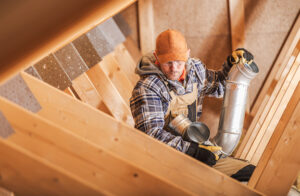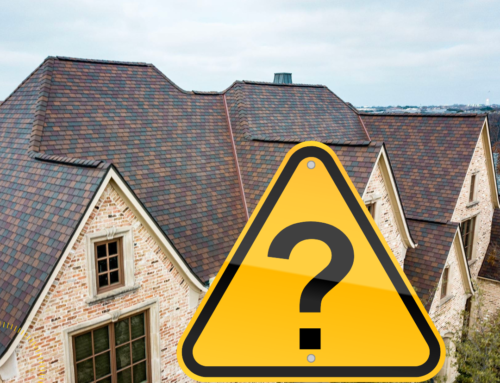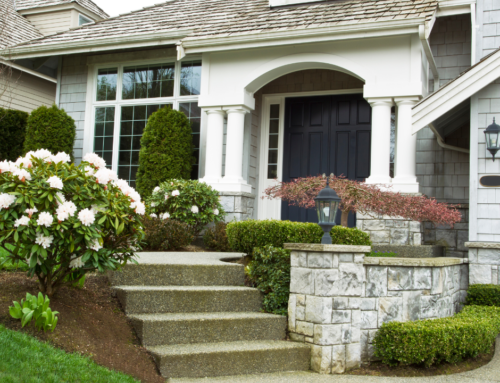Attic ventilation may not be on the top of your home improvement list, but it probably should be. A well-ventilated attic prevents mold from developing both inside the attic and in the living areas below, keeps it cool during the warm season and minimizes ice dams in the cold season. Related building materials also last longer and work better because of attic ventilation.
Since shingles and roof decks curl, buckle, warp, and split when the attic gets too hot, attic ventilation keeps roof temperatures at sustainable levels and extends the life of your roof. Ceiling drywall, joists, insulation, and rafters benefit from attic ventilation because they stay dry.
Passive or natural attic ventilation comes in the form of holes or slots in the roof, gable, or the eaves, soffits, or facia. These holes or slots are screened to prevent birds or vermin from entering the attic. Types of passive attic ventilation include roof ridges, screened gable vents, roof turbines, or screened vents in eaves, soffits, and fascia.
Mechanical venting is also an option, but the pros and cons of installing mechanical venting should be considered, and passive or natural venting should be efficiently utilized. The most common type of mechanical venting is an attic fan. Thespruce.com has a Whole House Fan vs Attic Fan Comparison Guide: Pros and Cons.
A more detailed guide to the types of passive or natural ventilation forms available is provided below.
Vents in Eaves, Soffit, and Fascia
All homes should already have passive air vents in the eaves, soffit, or fascia. Improving attic ventilation starts here. Access the attic to make sure that no insulation is covering up these vents. Check for vermin droppings or nests that might be blocking the vents. Confirm that the vent screens are solidly attached. Nail into place any loose vent screens.
Bobvilla.com offers more information with Attic Ventilation 101: What Homeowners Need to Know.
Ridge Vents
Ridge vents are passive attic ventilation systems built into the top ridge of the roof. A ridge vent is a long plastic or metal vent running along the length of the roof ridge or peak. This vent is covered with cap shingles to help it blend in with the rest of the roof. Heat rising from the attic can escape through the ridge vent. Wind blowing from either direction can flow into the attic.
The best time to install a roof ridge vent is when you are re-roofing the house or during initial construction, but a ridge vent can still be installed retroactively.
Gable Vents
Gable vents are passive ventilation devices installed on the upper portion of the house’s gable which is the triangular section. Gable vents can be as simple as large holes or slots covered in wire screen. They can also be metal or plastic vents or louvers that are 1- to 2-feet square in size. Gable vents allow air to escape on its own from the attic, preventing moisture build-up.
Roof Turbines
Roof turbines are large spherical-shaped rotating metal vents. While classified as passive attic ventilation devices, they come with a boost in the form of the wind. When wind catches the vanes on the turbine, the turbine rotates on ball bearings and draws air upward, out of the attic. Actively spinning roof turbines can have a noticeable effect on attic ventilation. Even turbines at rest will expel some air from the attic, though not as much as when the turbines are rotating.
The roofing experts at Dynasty Restoration can ensure that you have the right venting for your attic. For a Free Estimate, Contact us Today!






